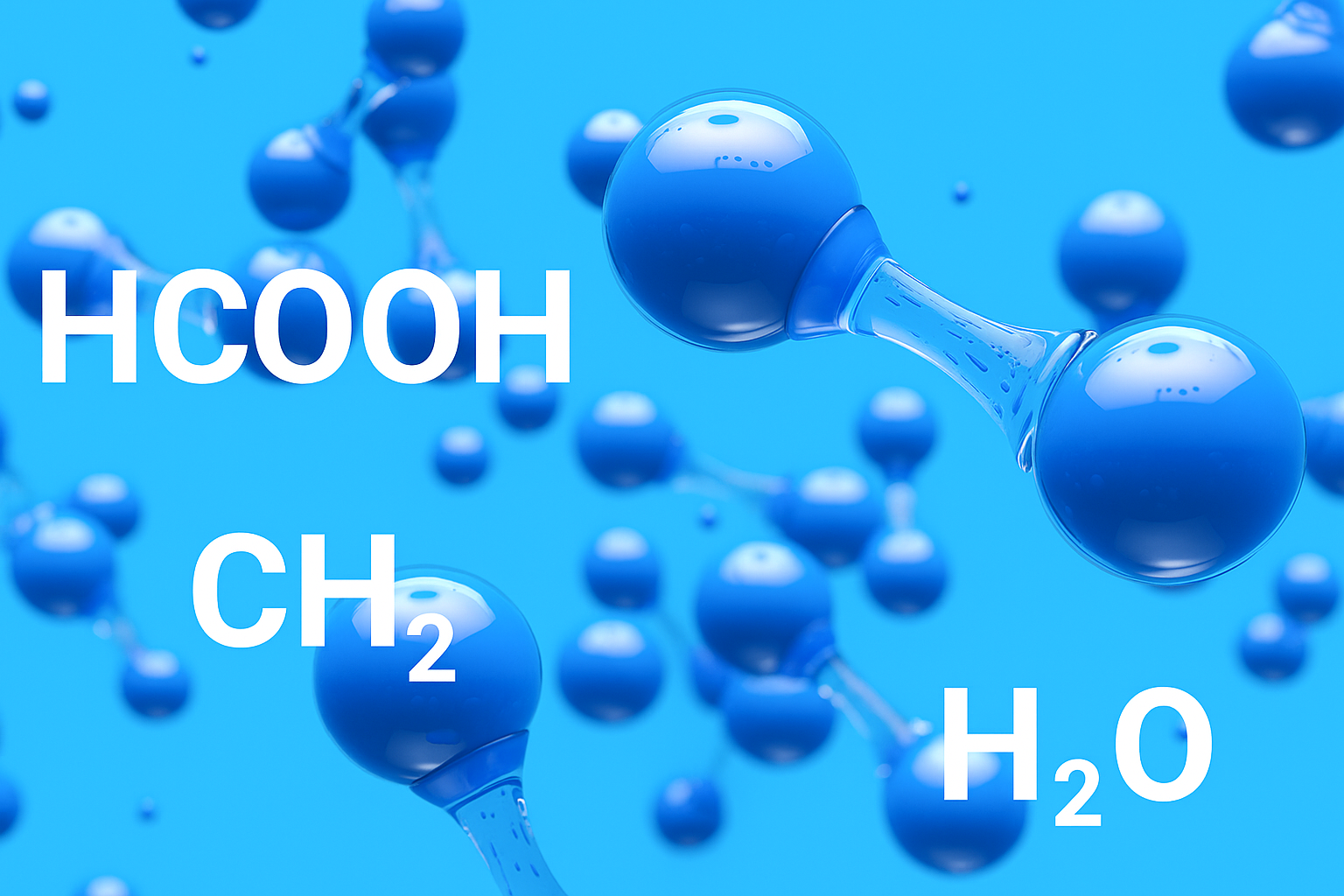When you hear about a chemical equation like HCOOH CH2 H2O, it might sound complex at first. But in reality, this combination — involving formic acid (HCOOH), Ethene (CH₂), and water (H₂O) — leads to a fascinating reaction that plays a vital role in organic chemistry.
In this article, we’ll simplify the HCOOH CH2 H2O reaction so you can easily understand what happens, why it’s essential, and how it’s used in real-life scenarios. Whether you’re a student, a chemistry enthusiast, or someone working in the field, this guide is tailored for you.

What Is the HCOOH CH2 H2O Reaction?
The HCOOH CH2 H2O reaction is a classic example of electrophilic addition, where formic acid (HCOOH) reacts with Ethene (CH₂=CH₂) in the presence of water (H₂O). The outcome is a compound called 2-hydroxyethyl formate, which features both a formate ester group and a hydroxyl group.
This reaction is essential in organic synthesis, especially when creating environmentally friendly esters and intermediate compounds used in plastics, cosmetics, and pharmaceuticals.
Chemical Details of HCOOH CH2 H2O
Chemical Equation:
markdown
CopyEdit
CH₂=CH₂ + HCOOH + H₂O → HCOOCH₂CH₂OH
- CH₂=CH₂ = Ethene (ethylene)
- HCOOH = Formic acid
- H₂O = Water
- Product = 2-Hydroxyethyl formate
The HCOOH CH2 H2O reaction represents the addition of formic acid and water to the double bond in Ethene, resulting in a stable and functional organic compound.
Mechanism of the HCOOH CH2 H2O Reaction
Let’s break the process down into easy-to-understand steps:
Step 1: Protonation of Ethene
Formic acid (a weak acid) donates a proton (H⁺), which attaches to the double bond in Ethene. This destabilizes the molecule and creates a carbocation intermediate.
Step 2: Nucleophilic Attack
Water (H₂O) acts as a nucleophile, bonding with the carbocation.
Step 3: Ester Formation
Formic acid contributes its formate group (HCOO−), which binds to the ethene derivative to form 2-hydroxyethyl formate.
This mechanism is an excellent example of acid-catalyzed electrophilic addition, a common reaction type in organic chemistry.
Why the HCOOH CH2 H2O Reaction Matters
You may be wondering: Why is this particular reaction critical?
Industrial Uses
The compound formed (2-hydroxyethyl formate) is used in:
- Polymer production
- Solvent manufacturing
- Fragrance chemistry
- Drug intermediate synthesis
Eco-Friendly Synthesis
Because the reaction uses water and formic acid, it avoids harmful solvents, aligning with green chemistry principles.
Educational Value
This reaction is often used in teaching labs to demonstrate:
- Addition reactions
- Ester formation
- Reaction mechanisms
Case Study: Lab Use of the HCOOH CH2 H2O Reaction
At a European university, a group of students used the HCOOH CH2 H2O reaction to synthesize biodegradable esters under mild heating (around 60°C) in a controlled environment. The result was a high-yield formation of 2-hydroxyethyl formate — a success that showed how simple molecules can be turned into valuable chemical compounds using just basic lab equipment.
Also, Read The Following: Crypto30x.com Regulation.
How the HCOOH CH2 H2O Reaction Compares to Others
Reaction TypeReagentsProductApplication
HCOOH CH2 H2O Formic acid + Ethene + Water 2-Hydroxyethyl formate Green solvents, pharmaceuticals
Hydration of Ethene Ethene + H₂O Ethanol Alcohol production
Esterification Alcohol + Carboxylic acid Ester + Water Perfumes, plastics
As seen in the table above, HCOOH CH2 H2O reactions provide unique outcomes that blend both hydration and esterification.
HCOOH CH2 H2O in Green Chemistry
One of the most exciting aspects of this reaction is its alignment with sustainable practices:
- Low toxicity: The chemicals involved are safer than many industrial solvents.
- Water-based: Using water as a solvent reduces environmental impact.
- Renewable inputs: Ethene can be derived from bioethanol, making the process renewable.
Visual Representation of HCOOH CH2 H2O (Add Alt Text!)
If you include diagrams in a blog post or educational page, make sure the image alt text consists of the keyphrase, such as:
- “Diagram of HCOOH CH2 H2O reaction mechanism showing ester formation”
- “Product of HCOOH CH2 H2O reaction: 2-hydroxyethyl formate structure”
This improves SEO and accessibility.
Safety Tips for HCOOH CH2 H2O Reaction
Even though the reactants are small molecules:
- Formic acid is corrosive. Use gloves and goggles.
- Ethene is a flammable gas. Handle with care in well-ventilated areas.
- Perform this reaction in a controlled lab setup with proper equipment.
Conclusion: Why You Should Know About HCOOH CH2 H2O
The HCOOH CH2 H2O reaction might seem like just another chemistry formula, but it has wide-reaching implications. From creating safer solvents to advancing green chemistry, it’s a perfect example of how understanding basic organic reactions can lead to real-world benefits.
Whether you’re working in a lab, studying for an exam, or designing new chemical processes, knowing how formic acid, Ethene, and water interact will give you valuable insights into the power of small molecules and smart chemistry.

Frequently Asked Questions (FAQs)
1. What is the product of the HCOOH CH2 H2O reaction?
The main product is 2-hydroxyethyl formate, an ester with both hydroxyl and formate functional groups.
2. What type of reaction is HCOOH CH2 H2O?
It’s an acid-catalyzed electrophilic addition reaction that also involves esterification.
3. Is the HCOOH CH2 “H2O” reaction eco-friendly?
Yes! It uses water and mild organic acids, making it suitable for green chemistry.
4. Can this reaction occur without a catalyst?
It typically needs mild acidic conditions (from formic acid) to proceed efficiently.
5. Is HCOOH CH2 H2O reaction reversible?
Under hydrolysis conditions, the ester product can break down, making the reaction potentially reversible.
6. What industries benefit from this reaction?
It’s helpful in pharmaceuticals, plastics, and sustainable solvent production.



